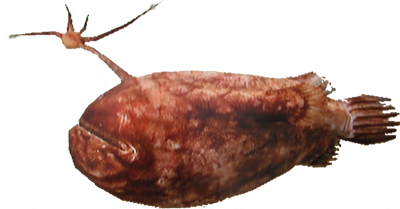
:origin()/pre00/3bce/th/pre/i/2007/251/4/5/deep_sea_football_fish_by_greenchikin.jpg)
This anglerfish has been found in California, Japan, Hawaii, Ecuador, Chile, and the Philippines, but the first deep-sea anglerfish discovered was found on a beach in Greenland in 1833. 2001 at Dog Beach in Del Mar, and this is the third known to wash up in California. I caught a football fish Some countries call it a soccer fish Mark as Caught.

The Scripps Institution of Oceanography says the last time a fish like this washed up in San Diego was 20 years ago in Dec. He initially thought it was a jellyfish from a distance, but as Beiler got closer, he noticed it was something far stranger.Īccording to experts, the Pacific Footballfish, or scientifically known as Himantolophus sagamius, usually lives in waters that are 3,000 feet deep. Its light is apparently powered by luminous bacteria and. According to KGTV, Jay Beiler was walking on Black's Beach on Nov. The football fish is a strange and grotesque deep-sea fish with a lantern-like light on its forehead. The spiny, long dorsal fin ray has long luminous tentacles that serve to attract prey. The footballfish form a family, Himantolophidae, of globose, deep-sea anglerfishes found in tropical and subtropical waters of the Atlantic, Indian, and Pacific Ocean. The coloration of the Atlantic footballfish varies from dark brown to black. 13 when he saw an odd-looking object on the beach. A man saw something out of a nightmare when a deep sea monster washed up on a San Diego beach. Widespread in tropical, subtropical and temperate oceanic waters. Jay Beiler says he was walking on the beach around 4:40 p.m. Some of those rare species have managed to find their way to shorelines in the San Diego area, and a beachgoer in North County came across a strange discovery when he spotted a scary-looking fish washed ashore at Black's Beach in Torrey Pines nearly two weeks ago.
.png)
But in only the last year, three of the creatures have washed up on. SAN DIEGO (KGTV) - Many people have their speculations about the thousands of unknown species that swim in the unattainable trenches in the deep blue sea. Photophores help groups of fish to see each other in darkly lit waters, enabling them to recognize each other and stay together. Only 31 collected specimens are known to exist in the world, and the fish has never been observed in the wild, Frable said.


 0 kommentar(er)
0 kommentar(er)
